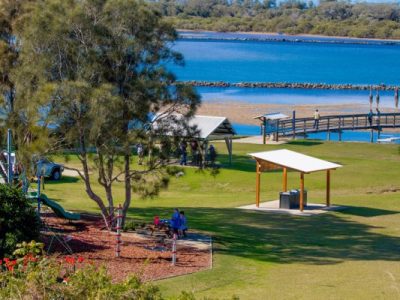COASTAL URBAN DESIGN

Recreational parks along beaches are a great way to open public access while maintain development set backs.
Five principles for coastal settlement structure were used to describe elements of the public domain and the built form that reinforces it. They are:
- Defining the footprint and boundary of each settlement to help protect the visual and natural setting.
- Connecting open spaces creating conservation, recreation and access opportunities in and around the settlement.
- Protecting the natural edges including the need to mitigate adverse impacts of natural hazards.
- Reinforcing the street pattern to enliven centres, allow for improved choice when moving from place to place to ensure social and commercial benefits are optimised.
- Encouraging the construction of appropriate buildings in a coastal context in relation to the settlement type and individual site’s natural features and location within the settlement.
These principles were illustrated with examples of best/desirable practice, undesirable practice and real examples using air photos to show outcomes of both types of practice.
One could say that the guidelines while useful in one sense have not been faithfully applied by local councils in NSW. They are matters for consideration and given other concerns/pressures they can be easily overlooked. That is not to say they cannot be resurrected given continued population growth and desires to develop or redevelop. It may be too late in some places, or is it? I am encouraged by the interest of many communities around the Australian coast to protect scenic, environmental and social values while retaining opportunities for employment.
Guidelines such as we saw developed in 2003 are NOT anti-development. They were meant to enhance and strengthen coastal lifestyles and livelihoods. Perhaps the coastal reform process in several states will embrace an opportunity to relook at these guidelines and think again about their application.
– words by Prof Bruce Thom


 QUARTZ SAND
QUARTZ SAND